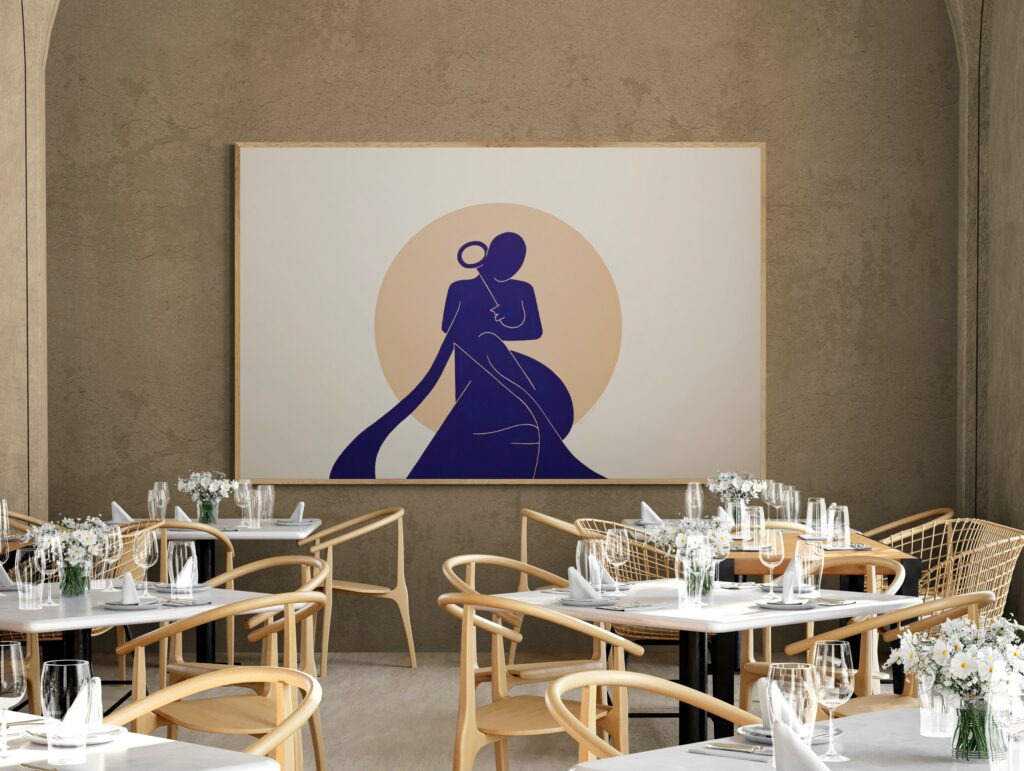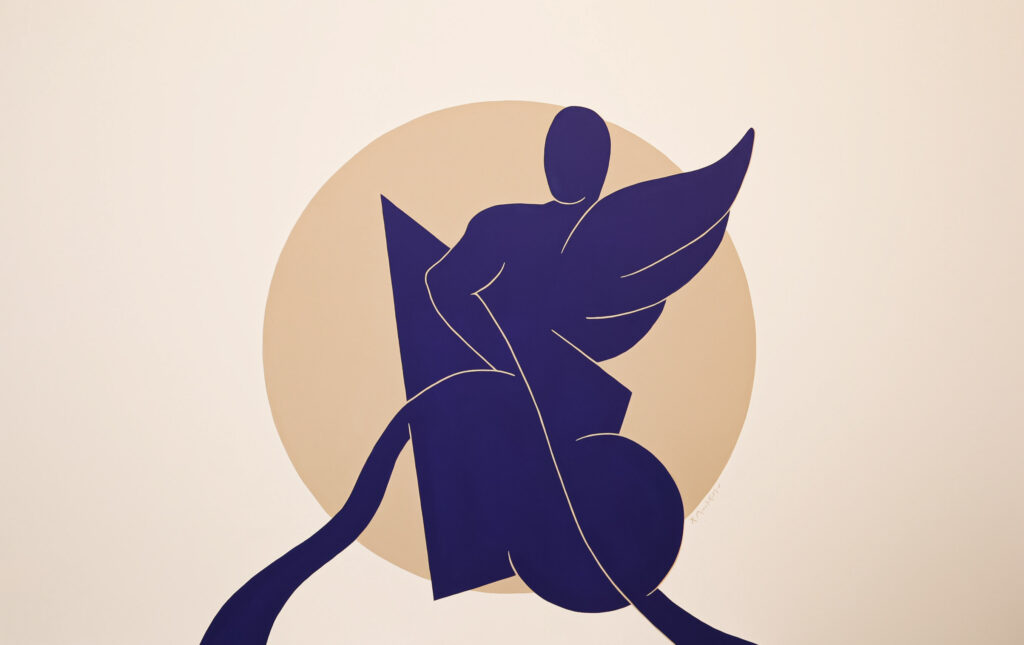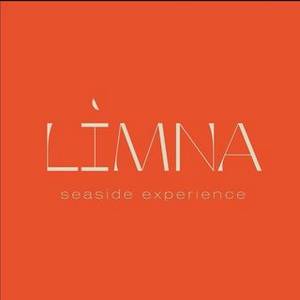Blog
New Series for Kritamo Restaurant at Miraggio
When: April 2025
The Project: A new series of artworks was commissioned for the incredible Miraggio Thermal Spa Resort (Paliouri, Halkidiki) and its beautiful sea view restaurant “Kritamo”.
The series is called “Plato: The Chariot & the Cardinal Virtues of the Soul” consists of 5 large artworks inspired by Plato’s theory of the Chariot & the 4 Cardinal Virtues of the Soul (Courage, Temperance, Justice & Prudence), an intertemporal, philosophical issue that I dreamed of transforming into minimalistic forms and shapes on my canvases…
All five artworks are 220×140 cm, painted with acrylic colors on stretched handmade canvases.
The Series
According to Plato's theory of classical philosophy, the cardinal virtues are four virtues of mind and character, prudence, justice, fortitude, and temperance.
Practical wisdom or prudence (phrónēsis)
is the perspicacity necessary to conduct personal business and affairs
of state. It encompasses the skill to distinguish the beneficial from
the detrimental, to understand the attainment of happiness, and to
discern the right course of action in every situation. Its antithesis or
opposite is the vice of folly.
Justice (dikaiosunê)
is the harmonious alignment of one's inner self and the comprehensive
integrity of the soul. It involves fostering sound discipline within
each facet of our being, enabling us to live with others and extend the
same regard to every individual. Additionally, justice pertains to a
state's aptitude to equitably allocate resources based on individuals'
deservingness, as determined by their merits. It entails refraining from
undue harshness, fostering a universal perception of fairness.
Furthermore, it entails embodying the qualities of a law-abiding citizen
or member of society, upholding principles of social equality. Justice
encompasses the formulation of laws that can be substantiated by valid
justifications, leading to a society where actions align with these
laws.
Moderation or temperance (sôphrosunê)
is the capacity to temper the indulgence of desires and sensory
pleasures within the bounds of what is customary for the individual,
aligning only with experiences already familiar to the soul. It
encompasses achieving a harmonious equilibrium and exercising
disciplined control when it comes to overall pleasure and pain, ensuring
that they remain within normal ranges. Moreover, moderation involves
cultivating a harmonious relationship and a balanced rule between the
soul's governing and being governed aspects. It signifies maintaining a
state of natural self-reliance and exercising proper discipline as and
when required by the soul. Rational consensus within the soul is
essential concerning what merits admiration and what warrants disdain.
This approach entails deliberate caution in one's choices, as one's
selection navigates between the extremes.
Courage (andreia)
can be defined as the ability to conquer fear within oneself when
action is necessary. It encompasses military confidence, a deep
understanding of warfare, and maintaining unwavering beliefs in the face
of challenges. It involves self-discipline to overcome fear, obeying
wisdom, and facing death boldly. Courage also entails maintaining sound
judgment in tough situations, countering hostility, upholding virtues,
remaining composed when faced with frightening (or encouraging)
discussions and events, and not becoming discouraged. It reflects
valuing the rule of law in our daily lives rather than diminishing its
importance.
Plato’s theory is also connected with the allegory of the chariot, which, found in the "Phaedrus," presents a compelling metaphor for the human soul and its journey toward truth and enlightenment. In this allegory, the soul is depicted as a chariot driven by two horses, each representing different aspects of human nature.
Plato’s allegory of the chariot provides a rich framework for understanding the complexities of human nature and the struggle for self-mastery. The two horses represent the dual aspects of the soul—one noble and rational, the other base and irrational—illustrating the internal conflicts that individuals face in their pursuit of truth and virtue. The charioteer’s journey serves as a metaphor for the ongoing effort to balance these competing influences through reason, education, and self-reflection.
By recognizing the dynamics of desire and aspiration, individuals can cultivate greater self-awareness and develop the skills necessary to navigate their inner conflicts. Ultimately, the allegory encourages a lifelong commitment to personal growth, ethical living, and the pursuit of knowledge, emphasizing that the journey toward enlightenment is as important as the destination itself.






















